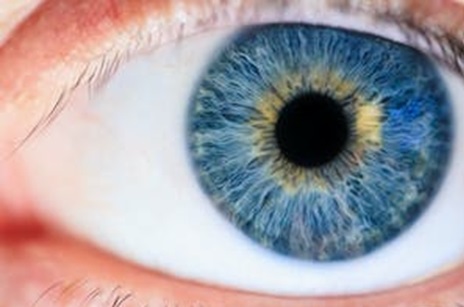Artificial Eyes in London with the Ezra Clinic
At The Ezra Clinic, expertise meets empathy, ensuring your unique needs are met with exceptional care. Explore our approach to prosthetic eye solutions, where patient-focused care is at the heart of everything we do.
Choosing Daniel Ezra for artificial eye treatments offers tailored, comprehensive solutions for those in need of prosthetic eyes. We ensure that each patient's unique needs are met with the utmost professionalism. Combining cutting-edge techniques and materials, we strive to deliver results that blend seamlessly with your natural appearance, enhancing both comfort and confidence. We are committed to providing our care and knowledge to assist you through the journey of getting an artificial eye with safety and support.
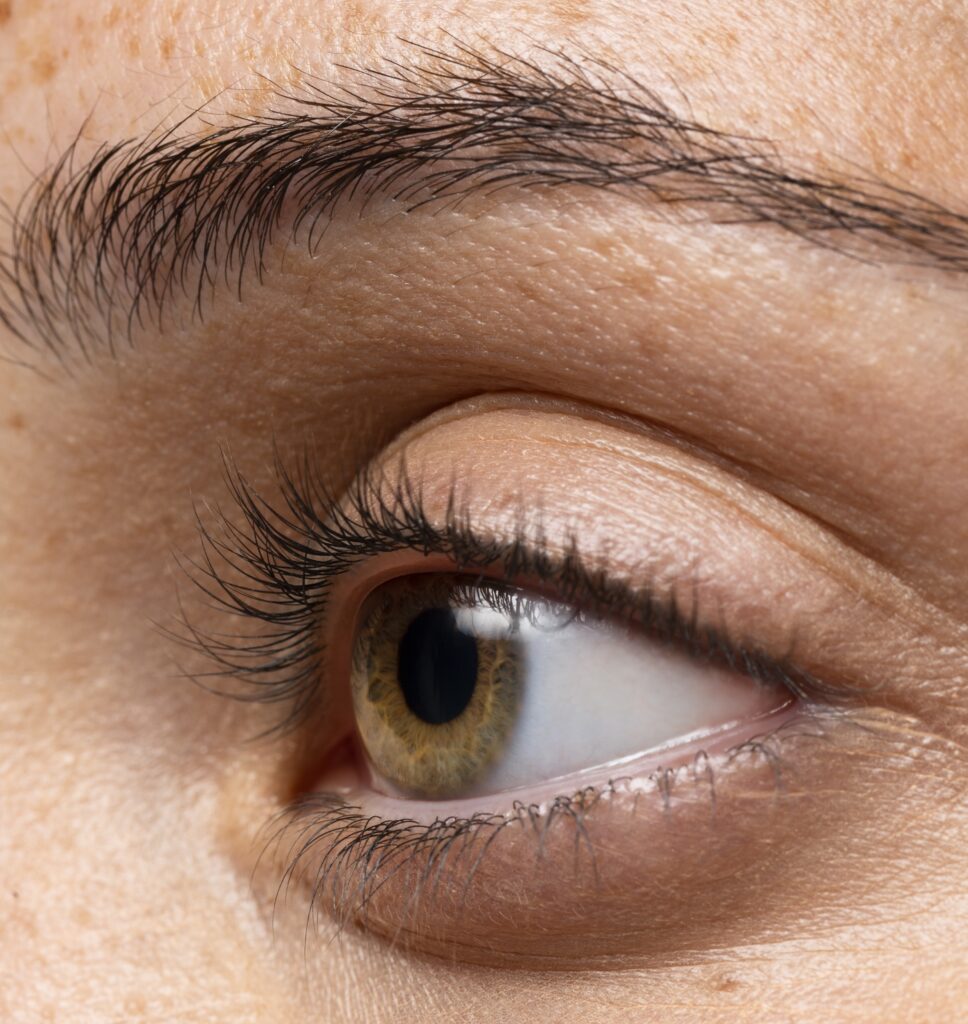
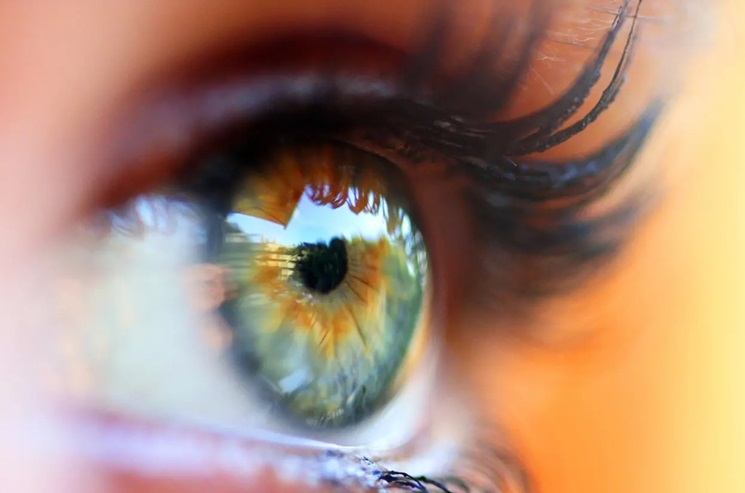
What is a Prosthetic Eye or Artificial Eye?
A prosthetic eye is also known as an artificial eye because it is a custom-made shell implant designed to mimic the appearance of a natural eye when placed into the orbital tissues. Eye implants are also commonly known as "glass eyes" and "ocular prosthesis".
Artificial eyes do not restore a patient's vision but can provide a more natural appearance for individuals who have lost an eye to injury, trauma or disease.
What Is the Prosthetic Eye material?
A prosthetic eye is normally oval and round, with a whitish outer shell finished to resemble the other eye's white colour. It is also painted to look like the iris and pupil of the other eye. Since the implants can be custom-made to match the size and colour of the other working eye, it is often difficult for others to notice that a person has an artificial eye.
When is prosthetic eye necessary?
The prosthetic eye may be necessary for patients who have had a severe eye injury, eye trauma or have experienced a serious eye disease such as:
- Eye Cancer
- Uncontrollable infection
- End-stage glaucoma
- Unmanageable eye pain in a non-seeing eye
In the above cases, it is often impossible to save the eye, in which surgical eye removal is necessary.
TYPES OF SURGERIES
At The Ezra Clinic, we provide two types of surgeries for prosthetic eyes.
Enucleation and evisceration surgeries are the most common procedures to remove a damaged or diseased eye and are only carried out when all other options have been unsuccessful.
- Enucleation is the medical name for the surgical removal of an eye.
- Evisceration is a procedure involving the removal of the contents of the eye, leaving an untouched outer shell intact.
The surgeries are directed only at the eye, keeping the same eyelids, lashes, eyebrows and skin as the eyeballs are kept inside a protective bony orbit in the skull. After removing the eye, the surgeon usually places a custom-made implant within the orbital tissues. This serves as a volume replacement, preventing the socket from looking hollow and sunken. The video opposite (or below?) shows how the surgery works. There is a ball implant within the eye socket which is in the shape of a ball. The is inide the tissues and is never removed. The prosthetic shell is then places under the eyelids and this is also shown in the reconstruction.
During the consultation, our specialist at The Ezra Clinic will determine which surgery method is the right one. This depends on your eye condition and the degree of damage that has been made to the eye.
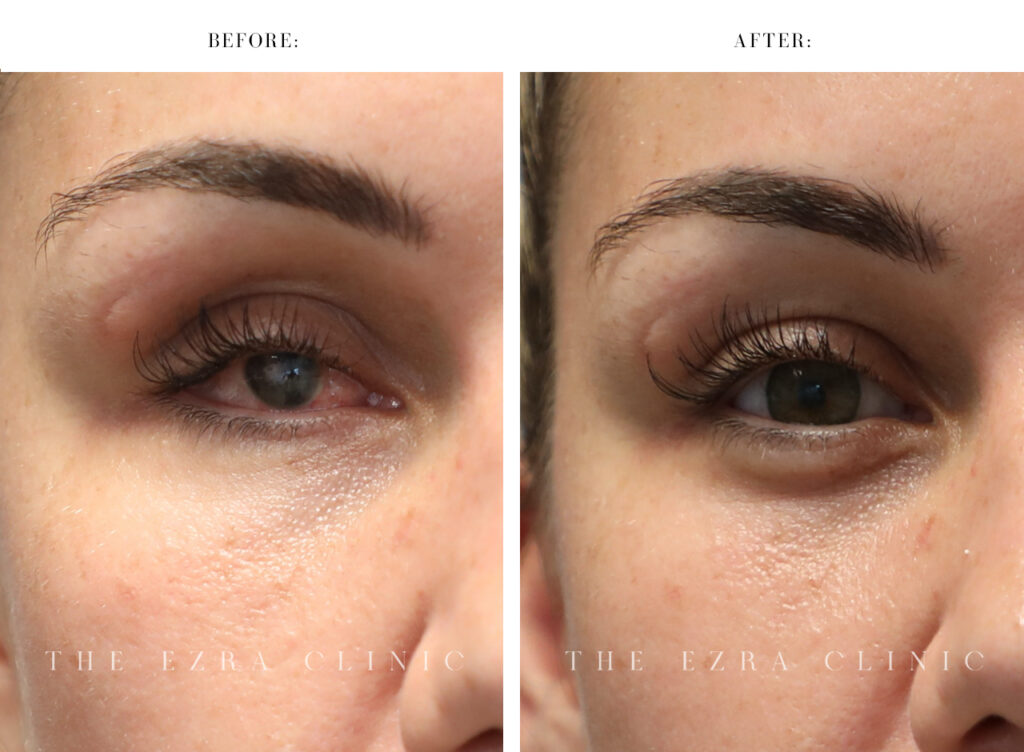
After experiencing significant trauma, this patient developed blindness in one eye. Initially, she underwent evisceration surgery to extract the affected eye and replace it with a non-removable ball implant situated within the socket tissues.
ARTIFICIAL EYE SURGERY OVERVIEW
Preparation for Surgery
Patients must be admitted to the hospital one day before the procedure. During this time, routine medical tests, including blood tests, scans, and X-rays, will be conducted.
The surgeon and anaesthetist will meet with you to discuss the procedure and have you sign a surgical consent form.
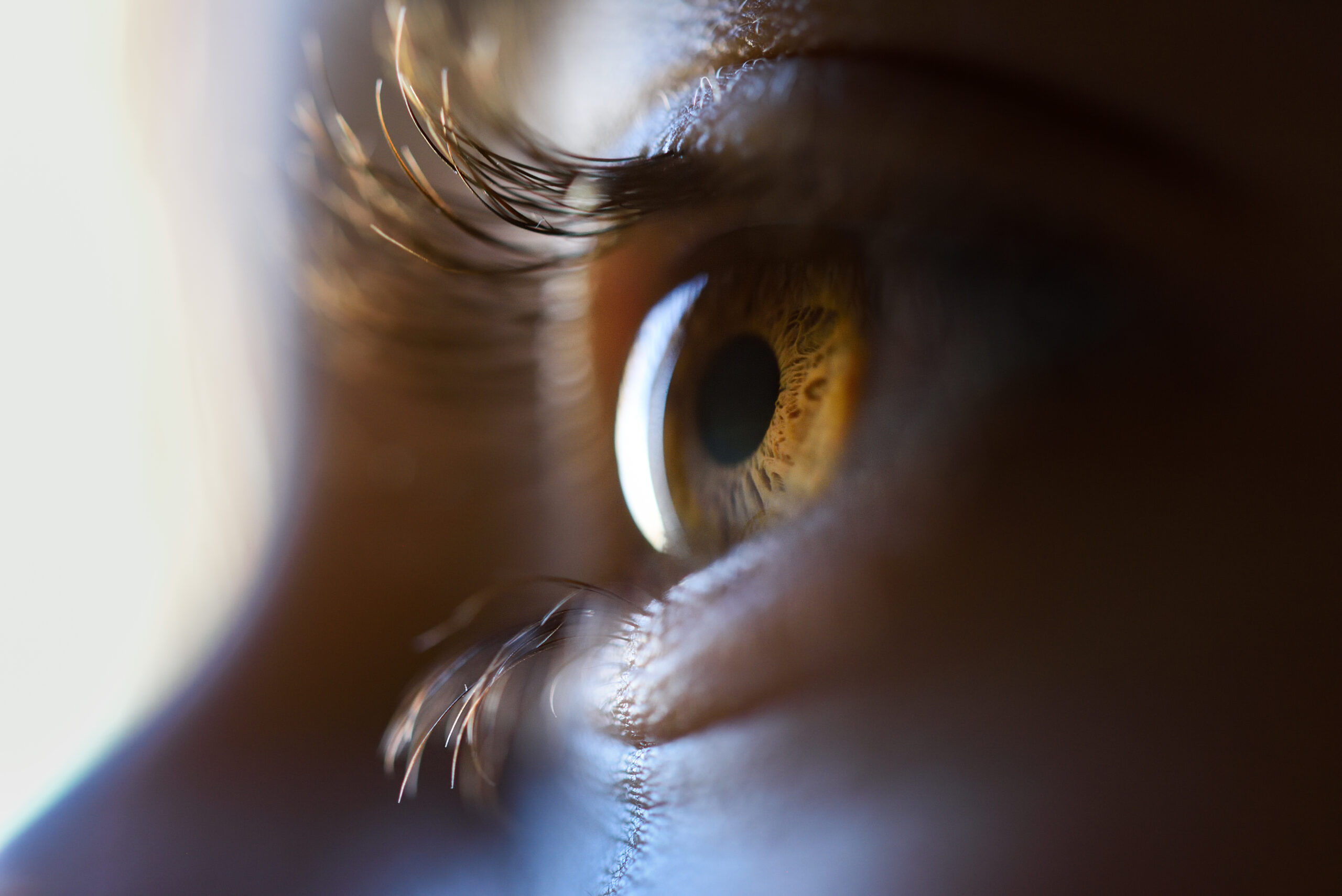
During Surgery
On the day of the surgery, the surgeon will mark the eye to be removed and perform a final check before you enter the operating room. These surgeries are normally performed under general anaesthetic, meaning the patient does not feel anything while it takes place.
During the Enucleation surgery, the optic nerve and eye muscles are cut. The eyeball is then removed and replaced by the prosthetic eye implant shaped like a ball. The muscles are re-attached to the eye implant, replacing the lost tissue volume which occurs during the surgery. By attaching these muscles to the eye implant, the patient can partially move the artificial eye similarly to their functioning eye.
Evisceration surgery is very similar, but instead of cutting the muscles away from the eye, the outer shell with muscle attachments is preserved. The ball implant is then placed within this shell. A small plastic conformer resembling half an almond shell is positioned behind the eyelid. This provides the shapes of the lids to be maintained and act as a placeholder for the prosthetic eye, which will be fitted a few weeks after the surgery.
Post-Surgery
At the Ezra Clinic we want to ensure your healing goes smoothly. Our specialist will cover the affected eye with a dressing that helps reduce swelling and remove it the day after. Please note that bruising and swelling of the lids can occur, getting worse in the first few days following the surgery but then gradually improving. The eye socket will also appear slightly red but become pinker as the area begins to heal.
Headaches and eye soreness are expected for the first couple of days after the surgery, but a doctor can prescribe some painkillers to help manage the pain. Nausea might also occur as a result.
The transparent shell that will be fitted during surgery will be visible. It will have a hole in the middle to assist with drainage and airflow, allowing medications to be administered. You must keep this in your eye socket until it has healed and can tolerate a custom eye to be fitted.
Severe trauma resulted in the loss of vision in one eye for this patient. The initial response was evisceration surgery, where the eye was removed and substituted with a fixed ball implant embedded in the socket tissues. Following the completion of the healing process, a perfectly painted prosthetic shell, designed to resemble the unaffected eye, was applied.
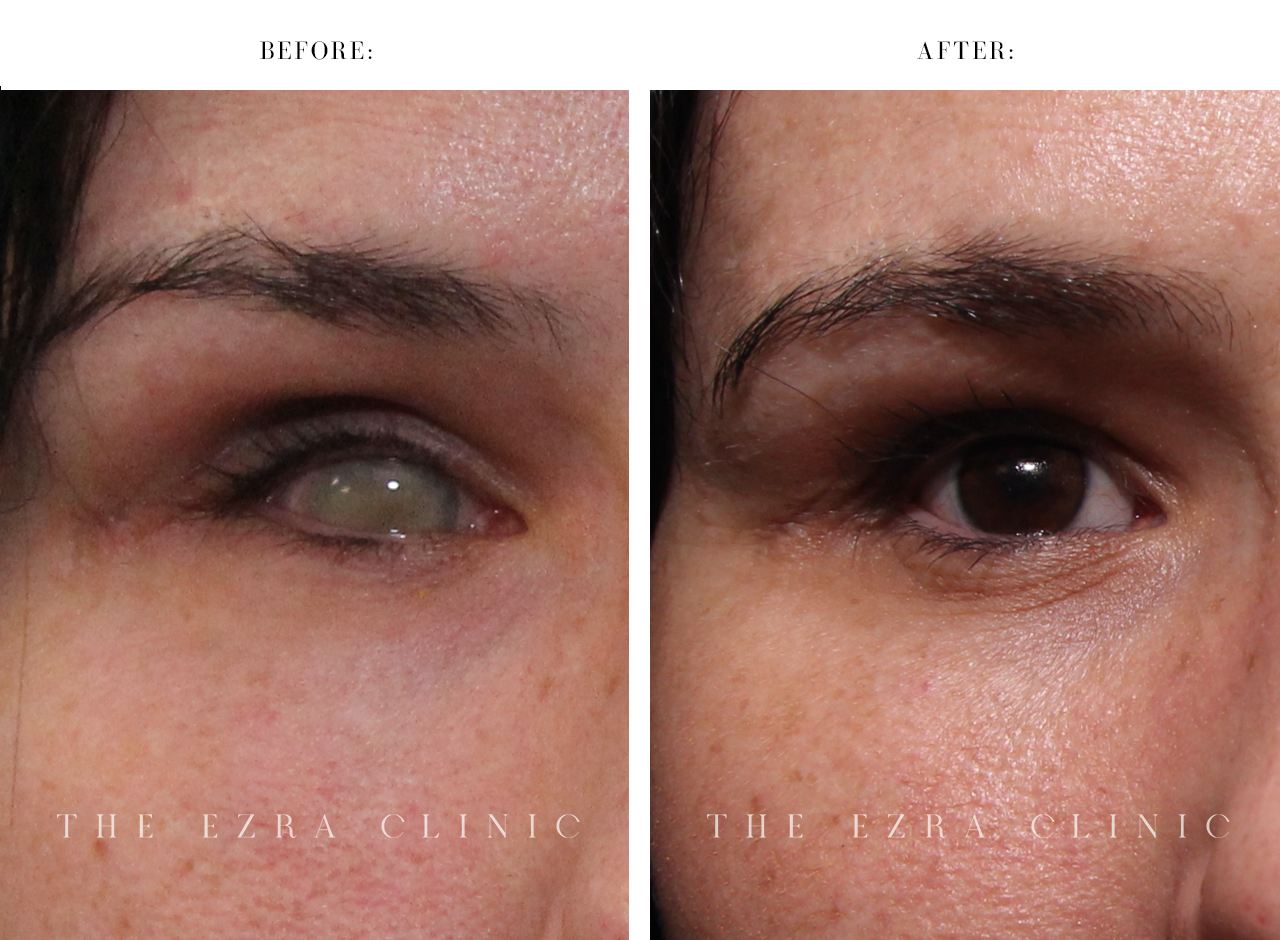
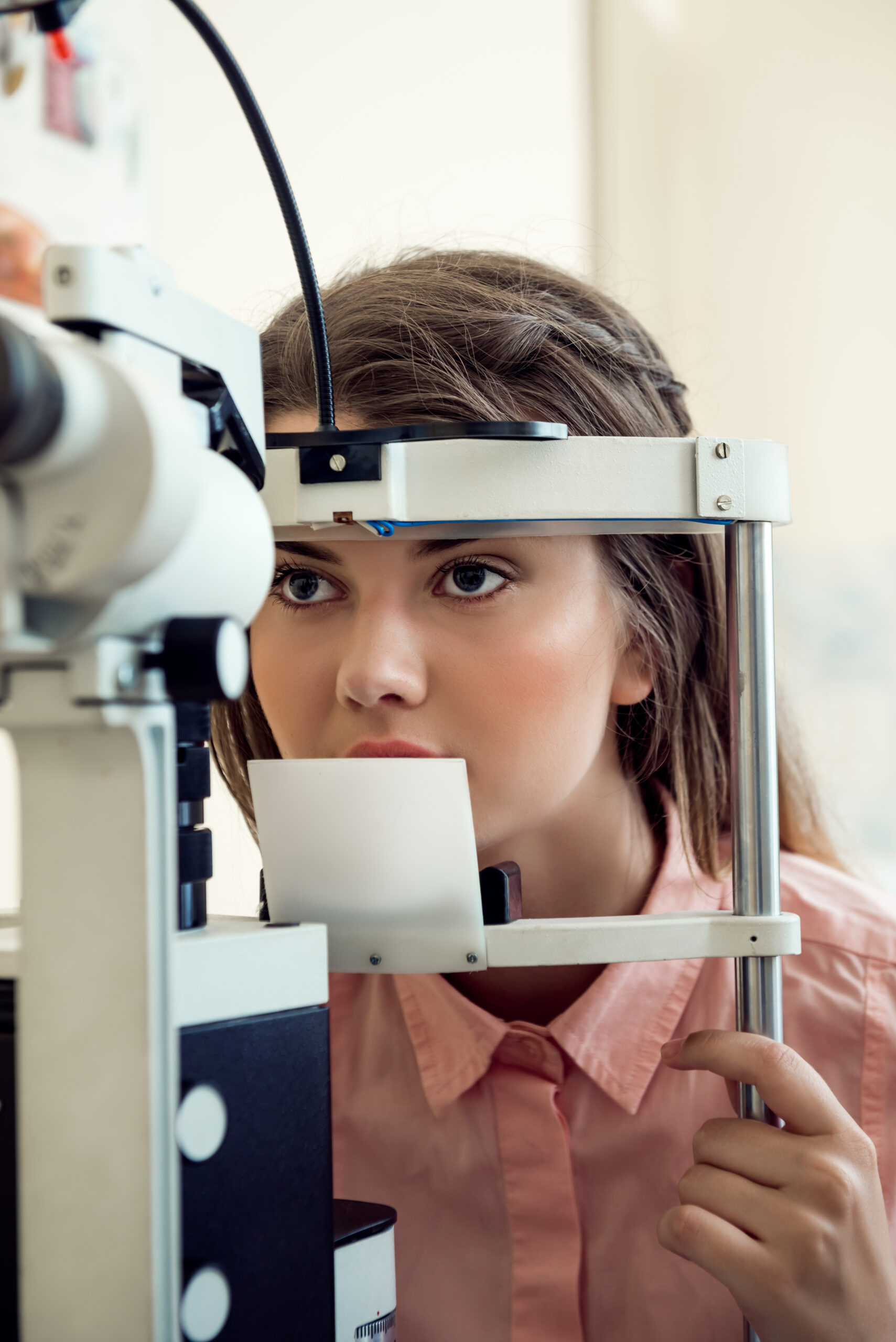
FITTING
Once your eye surgeon has established that your socket is well healed, you will be sent to have your custom artificial eye fitted (prosthesis). The eye heals in around 3-6 weeks after the surgery.
The eye implant is made by creating a mould of the eye socket to match the shape, size and colour of the other eye's appearance and to fit correctly over the orbital implant. The fitting procedure is painless and can take up to two hours.
When fitted, the conformer shell put in during the enucleation surgery will be removed, and the custom artificial eye will be fitted. Like the conformer, the prosthetic eye is curved and shaped like a shell and will fit behind the eyelid.
Patients may need adjustments and re-fittings as eye sockets can naturally change shape with the ageing process. They must also be cleaned annually and replaced every 5-7 years. Our specialist will show patients how to clean and remove them from the eye socket.
Since pupils often dilate and change appearance based on lighting conditions and other factors, the pupil on the artificial eye cannot change. This means that the pupil size of your natural eye may not always match the size of the pupil on your prosthetic one. However, modern technological advancements allow prosthetic eye implants to appear as natural as possible.
Aftercare
Patients will be shown how to clean the eye socket area and receive plenty of eye care advice on how to look after the shell. Once at home, keeping the area uncovered is advised for the best healing. However, patients can wear dark glasses until the swelling has subsided.
Patients will be given eye drops or an ointment, which should be applied several times a day to prevent infection. Antibiotic treatment and pain medication may be prescribed.
A follow-up consultation will be scheduled, and the doctor will examine the area, determining whether you are healing well.
Counselling after the surgery
After losing an eye, many patients experience profound sadness and grief. Emotions can be unpredictable, and accepting the loss can be challenging. It is expected to feel as though the eye is still present or to have temporary visual hallucinations. However, these sensations tend to improve over time.
At The Ezra Clinic we have the utmost care for our patients. For those struggling to cope, we advise to take part in counselling. It allows to discuss feelings and come to terms with the situation at hand.
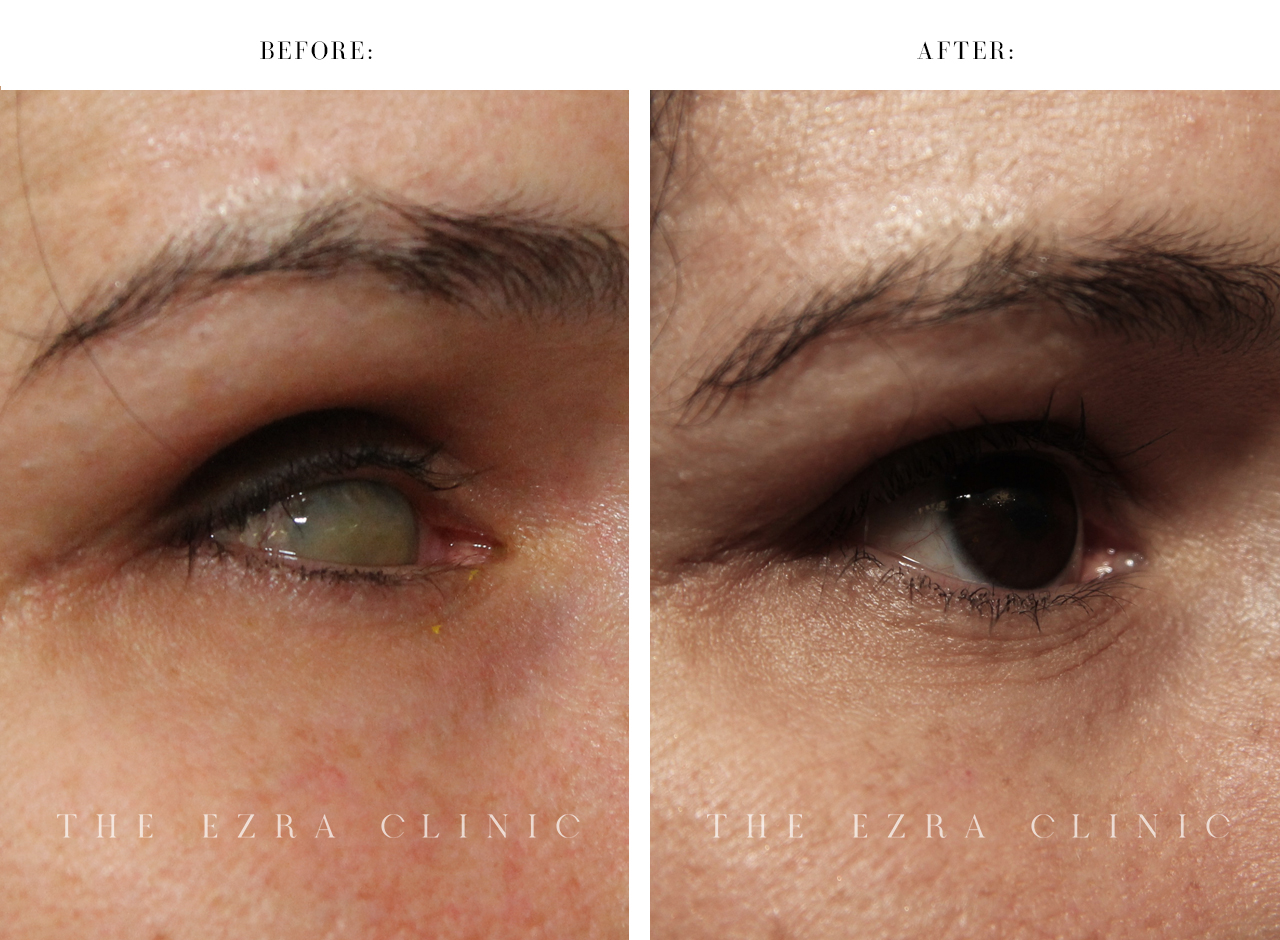
Following a traumatic incident, this patient developed blindness in one eye, prompting initial evisceration surgery to replace the eye with an embedded, non-removable ball implant within the socket tissues. Once the healing process concluded, a meticulously painted prosthetic shell, perfectly matching the appearance of the healthy eye, was fitted.
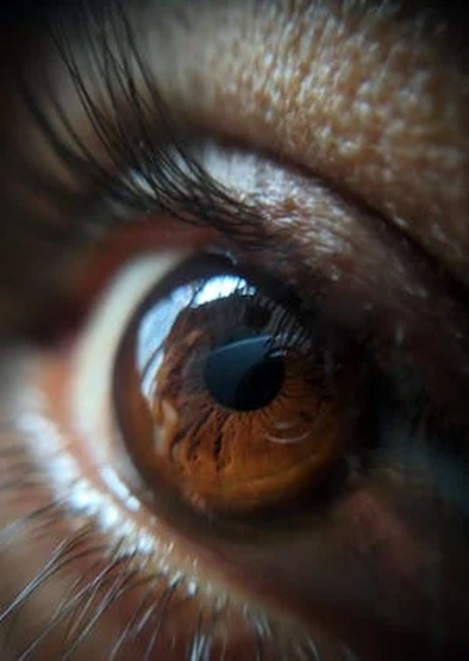
FAQ
Is the prosthetics a glass eye?
Can you see with an artificial eye?
Is driving permitted after eye removal?
Can you sleep with a prosthetic eye?
What is the difference between orbital and ocular prosthesis?
Will I need to replace the artificial eye in the future?
